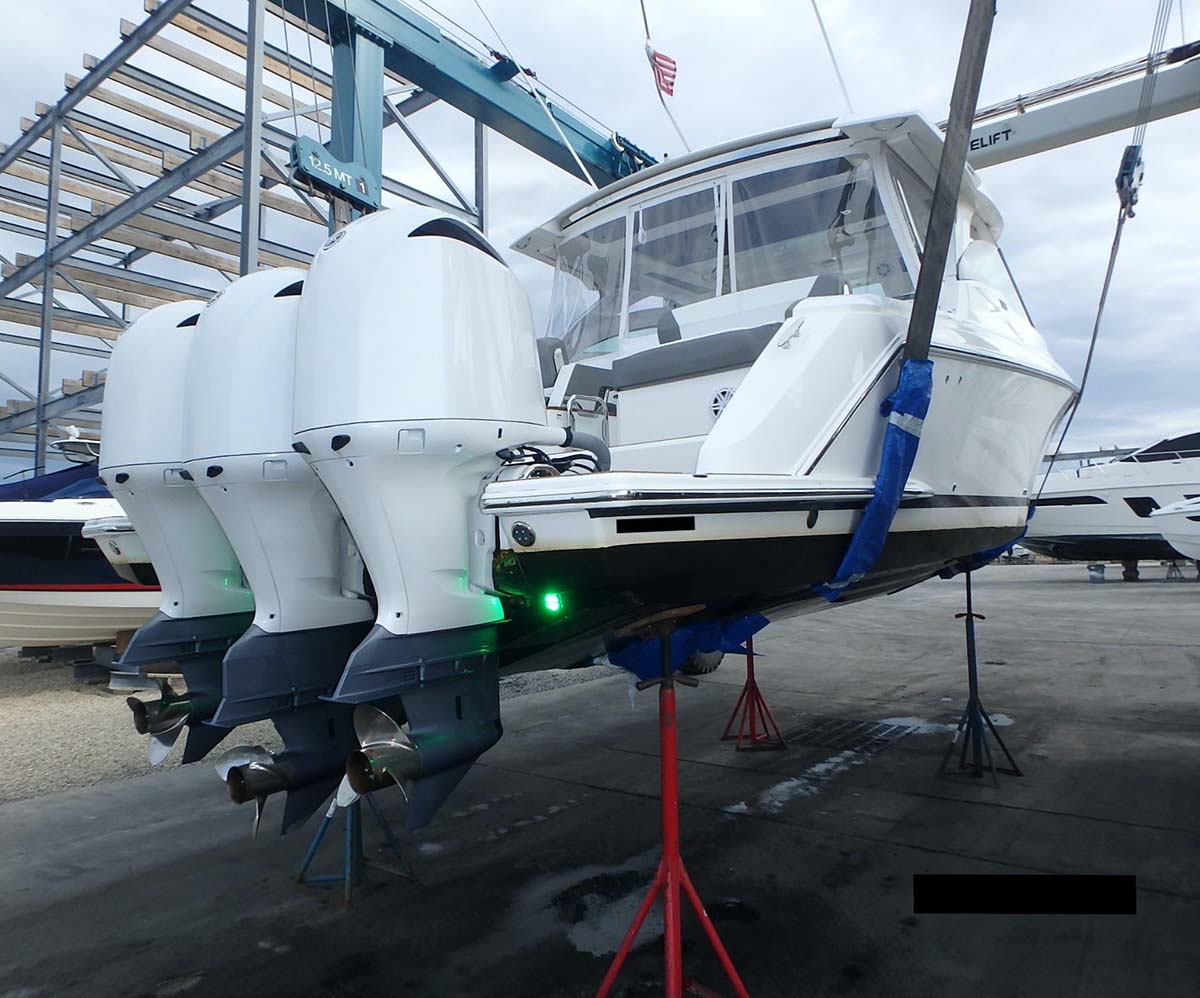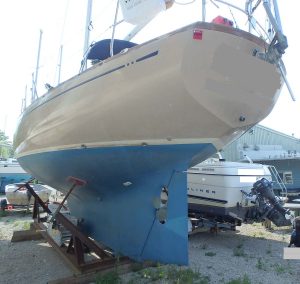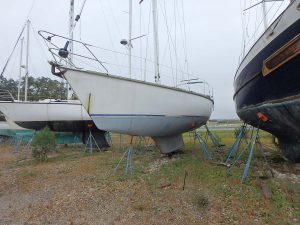
Worker Safety When the Vessel is in the Air
Published on October 2, 2023One of the unique dangers that marina employees and contractors can face is working under a suspended vessel. Employees and contractors may also need to work under and on vessels that have been elevated and secured with blocks and jack-stands. It is important for all marina owners and operators to understand the recommendations from the American Boat and Yacht Council (ABYC) for Boat Lifting and Storage, and Occupational Safety and Health Administration (OSHA) requirements for working under a suspended load. ABYC provides guidelines and these are advisory only, not rules. OSHA standards are published in Title 29 of the Code of Federal Regulations (CFR).
Suspended Loads
A suspended load is anything that is lifted off the ground, and marina employees and contractors may need to work under a suspended load. Working around or near suspended loads involves a risk of serious injury. The most obvious danger is that what goes up, must come down. A common sight in marinas is heavy vessels carefully lifted and placed in a location with impressive precision. The predictability of this precision can result in a casual approach to safety. A quick search of the internet for videos and images of serious mishaps with suspended vessels should convince marina owners, operators, and their staff that working under a suspended vessel should be approached with caution. There are many variables that affect the safety of the lifting equipment, such as operator skill and attention, equipment maintenance, over-loading, and weather.

The fall zone means the area (including but not limited to the area directly beneath the load) where it is reasonably foreseeable that partially or entirely suspended loads could fall in the event of an accident.
To reduce the risk while working under a boat in a travel lift or crane hoist ABYC offers these guidelines:
ABYC TY28: When appropriate, the forward and aft slings should be tied together so that they cannot move apart.
ABYC TY28: When personnel are on or under a boat in a lift, the load should not be supported solely by the lift equipment. The boat should be supported by blocking or some other means to provide protection to personnel in the event of a failure of the lift system.
OSHA is very strict about the safety requirements for workers in environments with a load that is suspended by straps. The directives below are taken from the OSHA rules, 29 Code of Federal Regulations (CFR) 1910.184 and 29 CFR 1926.1425.1,2
Safe operating practices. Whenever any sling is used, the following practices shall be observed:
- Slings that are damaged or defective shall not be used.
- Slings shall not be shortened with knots or bolts or other makeshift devices.
- Sling legs shall not be kinked.
- Slings shall not be loaded in excess of their rated capacities.
- All employees shall be kept clear of loads about to be lifted and of suspended loads.
Only employees essential to the operation are permitted in the fall zone (but not directly under the load). An employee is essential to the operation if the employee is conducting one of the following operations and the employer can demonstrate it is infeasible for the employee to perform that operation from outside the fall zone: (1) Physically guide the load; (2) closely monitor and give instructions regarding the load’s movement; or (3) either detach it from or initially attach it to another component or structure (such as, but not limited to, making an initial connection or installing bracing).
When the boat is suspended by a marina forklift and work needs to be performed on any part of the boat, place the boat on a work rack. There is no designated safe operating procedure from ABYC or any other organization for working on a boat while suspended by a forklift. There are OSHA rules prohibiting working under a load suspended by a forklift.
29 CFR 1910.178(m)(2): No person shall be allowed to stand or pass under the elevated portion of any truck, whether loaded or empty.
Supporting Vessels
ABYC standard TY-28 provides guidance for the use of blocking and jack-stands. Important considerations from this standard include:
Barrels, foam blocks, cinder blocks, and other masonry products not intended to bear weight should not be used for blocking.

If the blocking is over two tiers high, it should be cribbed. Cribbing height should not exceed 1.5 times the minimum base footprint dimension.
Boat stands should be spaced no more than 10 feet apart on centers, with the forward-most and after-most pair of stands no more than 10 feet from the ends of the waterline. Powerboat stands should be set with the aft pair placed as close to the aft end of the waterline as structure permits and spaced no more than 10 feet apart on centers.
Secure each pair of stands across the boat to prevent lateral movement. The material used to tie the stands together should be at least 3/16-inch chain.
Do not allow anything to be tied to the stands (such as a tarp), except the chains that hold pairs of stands together.
Brownell, manufacturer of jack stands, offers an on-line course, ‘Boat Blocking and Storage Safety Training”. Go to https://boatstands.com/training/ for more information.
References
29 CFR 1910.184 https://www.osha.gov/laws-regs/regulations/standardnumber/1910/1910.184
29 CFR 1926.1425 https://www.osha.gov/laws-regs/regulations/standardnumber/1926/1926.1425
Boat Lifting and Storage. ABYC Standard TY-28 JULY 2020
Steve Heinrich is owner of Flagship Marine Survey Corporation and a member of the Society of Accredited Marine Surveyors and the American Boat and Yacht Council. He can be reached at steve@flagshipmarinesurvey.com or 715-255-0515.
| Categories | |
| Tags |





